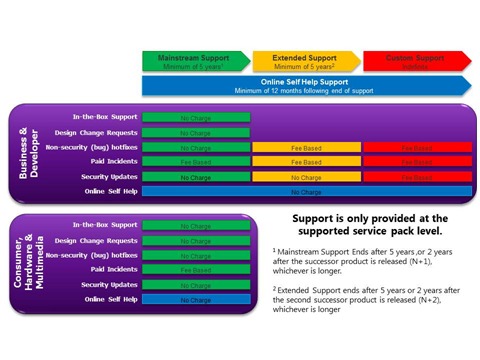Note
Access to this page requires authorization. You can try signing in or changing directories.
Access to this page requires authorization. You can try changing directories.
 No. I’m not talking about sorting out the music for one’s funeral* …
No. I’m not talking about sorting out the music for one’s funeral* …
I think every manager I have had in my 10 years at Microsoft has grumbled that I’m not great with planning – it’s a fair criticism and I try to work on it. When the subject comes up a quote from a book by William Gibson comes into my head. “I try to plan in your sense of the word, but that isn't my basic mode, really. I improvise. It's my greatest talent. I prefer situations to plans, you see.... Really, I've had to deal with givens.” the speaker is actually an artificial intelligence, but I think that is how a lot of IT people work: improvise, deal with the situation at hand, then deal with the next situation. It may be what we prefer – but be it training plans or plans for rolling out new software you’ve got to do it.
We do try to help on the software side, by being both transparent and predictable. The rule for core things (like desktop and server operating systems) is at least 10 years of support. (Embedded operating systems have a different support model which runs for longer).
Mainstream support runs for 5 years from release OR until 2 years after the successor product releases whichever is later. Extended support runs for 5 years, or 2 years after the second successor product releases. After that those who can’t move forwards, but have deep pockets have the option on custom support. In order to be supported you have to be running a supported level of service pack, and I’ll cover that in a later post.
So let’s take a worked example.
* Windows 2000 professional’s General availability date was March 2000.
* The “n+1” release is Windows XP, which had a General availability date of December 2001.
* Two years after Windows XP would be December 2003 , less than the 5 year minimum so mainstream support for Windows 2000 runs to March 2005 when extended support begins. (In practice it got a mainstream June – products only go off the support list on particular days and they live on to the next one after the anniversary)
* The “n+2” release is Windows Vista with a General Availability date was Jan 2007.
* Two years Vista would be Jan 2009, again less than the 5 year minimum, so extended support support runs to June 2010. Again there is a few days extension.
So the cut off date for Windows 2000 professional is July 13th 2010. After that there will be custom support only for 2000 and if you are still running it you should understand that means we stop the routine distribution of security updates for it.
As it happens the cut off dates for Windows 2000 Server mainstream support was 2 years after the release of Server 2003 – putting it in May 2005 - so 2000 professional and server sync’d up. The 2 year point after Server 2008 and the 5 years of extended support take it to the same time, June 2010. So the cut off date for Windows 2000 Server is July 13th 2010.
I like to think that no-one reading this blog would still be running Windows 2000, but I know a good many are still running Windows XP. So let’s carve the dates on XPs tombstone:
5 years after XP’s GA date would be December 2006, but Vista had not shipped by then. So Mainstream support for XP ends two years after the GA date of Vista which takes us to Jan 2009 (In practice it was April 2009). Unless you have taken out a contract for extended support, you have only been getting security updates for XP since then.
5 Years after that is April 2014. Windows 7 had a GA date of October 2009, so 2 years on from there would be sooner. Extended support for XP ends on the later of the two dates, so April 2014.
For Vista, five years after GA will be later than 2 years after Windows 7, so Vista goes from mainstream to extended support in or shortly after January 2012. We’ve set the date, April 10th 2012. The end of extended support will depend on when the next version of Window ships, but it won’t be before April 11th 2017. Both dates for Windows 7 depend on future versions of Windows but won’t be sooner than January 13th 2015, and January 14th 2020. Put them in your diary now, with a reminder a long time in advance :-)
You can get all the dates from the Product lifecycle page
* Strange Angels by Laurie Anderson if you must know.
-